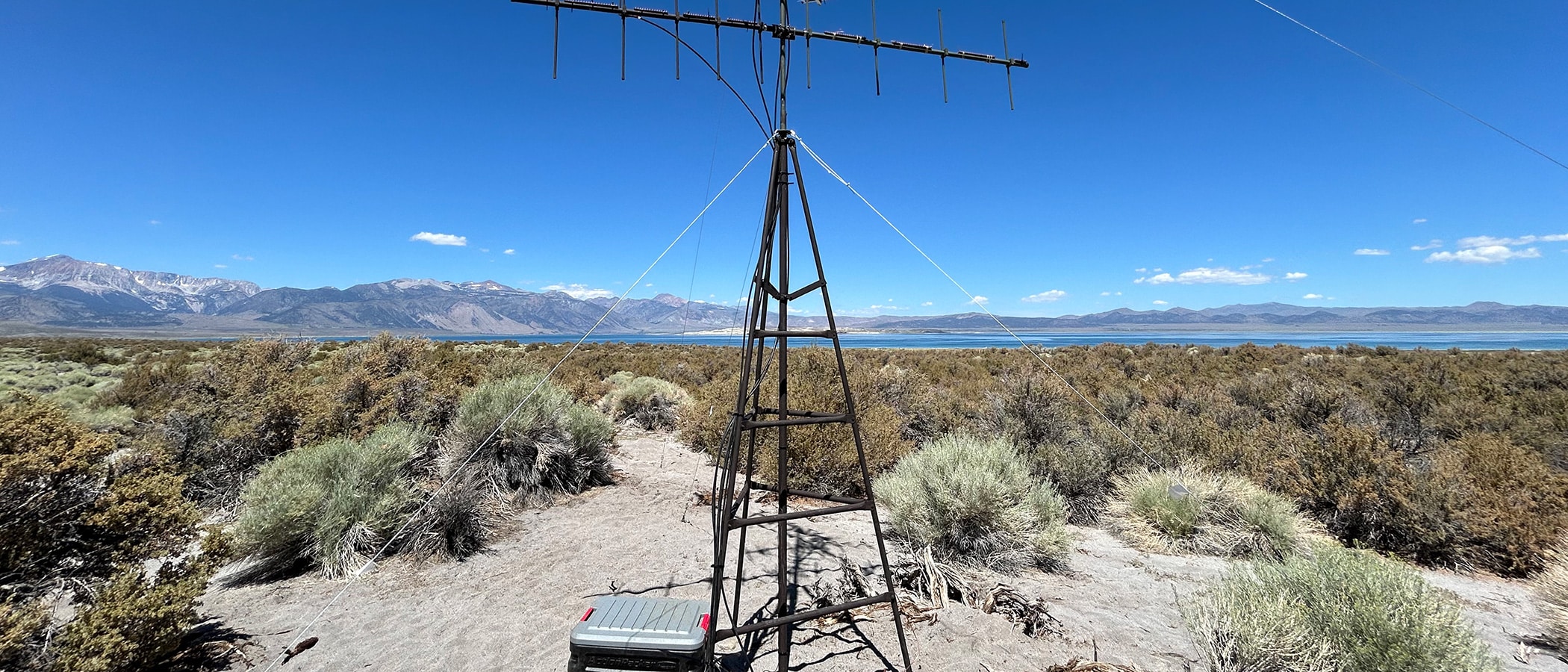
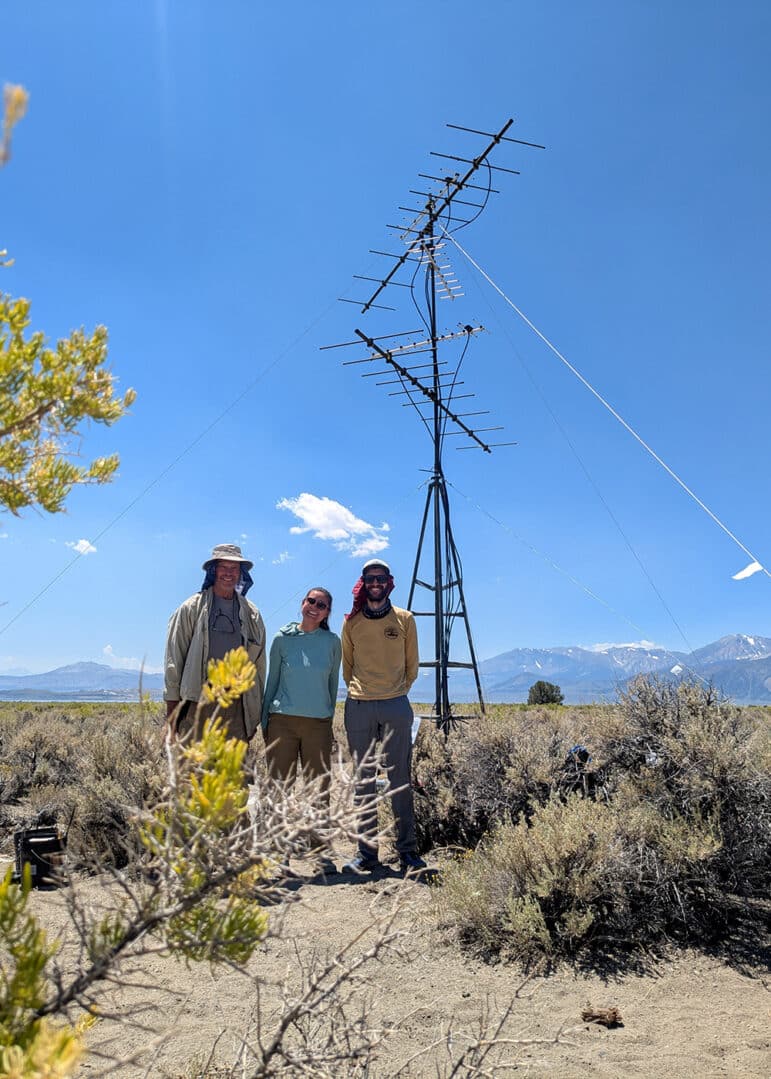
After more than six years of collaboration, permitting, and piecing together logistics, the Mono Lake Committee has successfully installed three new Motus arrays around Mono Lake. This marks a significant milestone in ongoing efforts to better understand the migratory movements of bird species that rely on Mono Lake as critical stopover habitat.
The Motus Wildlife Tracking System is an international network of automated radio telemetry arrays that track the movements of migratory animals—birds, bats, and even insects—using tiny radio tags. When a tagged animal flies within detection range of a Motus array, its presence is logged and uploaded to the Motus network, contributing valuable data to a shared global research collaboration.
Motus isn’t completely new to the Mono Basin. The Committee installed the first Motus array in the area in July 2023 and began collecting promising data, detecting four species of tagged birds. Unfortunately, that array was lost during the Inn Fire in May 2025. But during July 2025 the Committee was able to install three new Motus arrays at three new sites that should provide better overall coverage of Mono Lake. Researchers will now have a far greater ability to detect and understand the movements of migratory birds, especially Wilson’s Phalaropes, as they stage at Mono Lake. This broader coverage increases the chances of tracking multiple species across the lake, which will deepen our understanding of this critical habitat and inform future conservation efforts.
The installation process of the new arrays was nothing short of monumental. Under a relentless high desert sun, surrounded by swirling volcanic dust columns and swarms of deer flies, our small team of builders—Mono Lake Committee staff Robbie, myself, and Sarah, plus Mono Lake Volunteer Urs—worked more than 100 hours to bring the towers to life. We spent weeks preparing guy wires, assembling coaxial cables, and sizing every component for precise installation. In the field, we dug anchor holes, hauled heavy bags of cement, and secured rebar into the ground to ensure the arrays would withstand the elements.
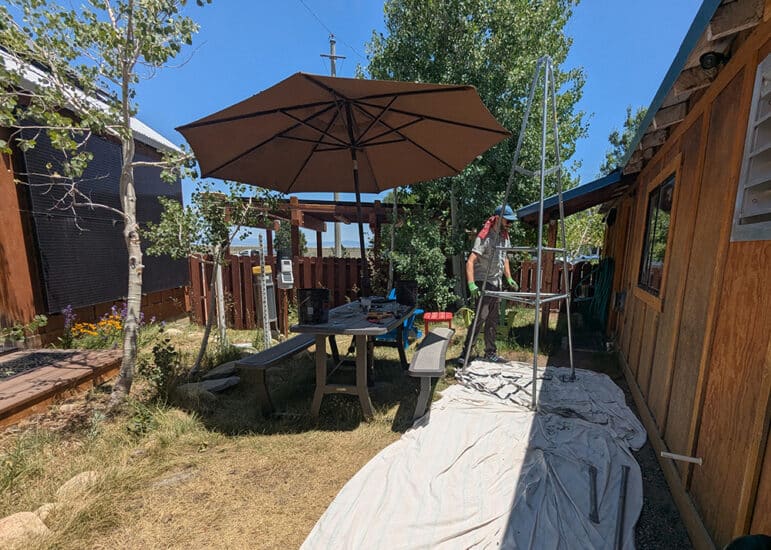
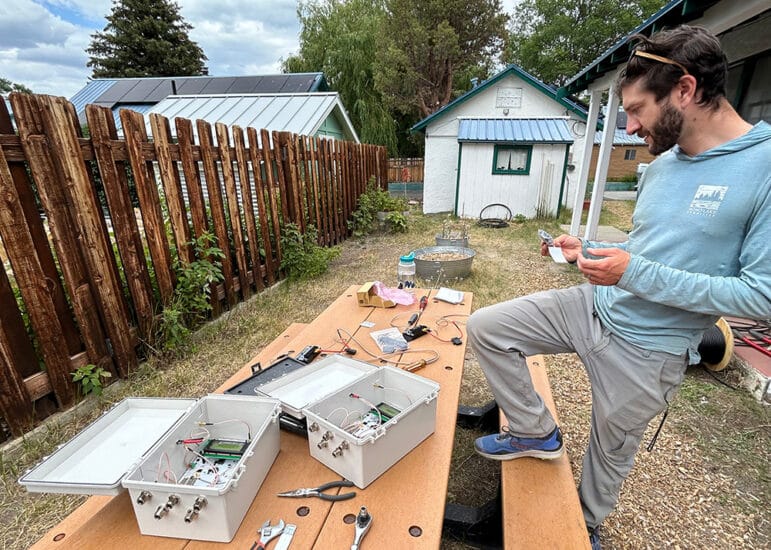
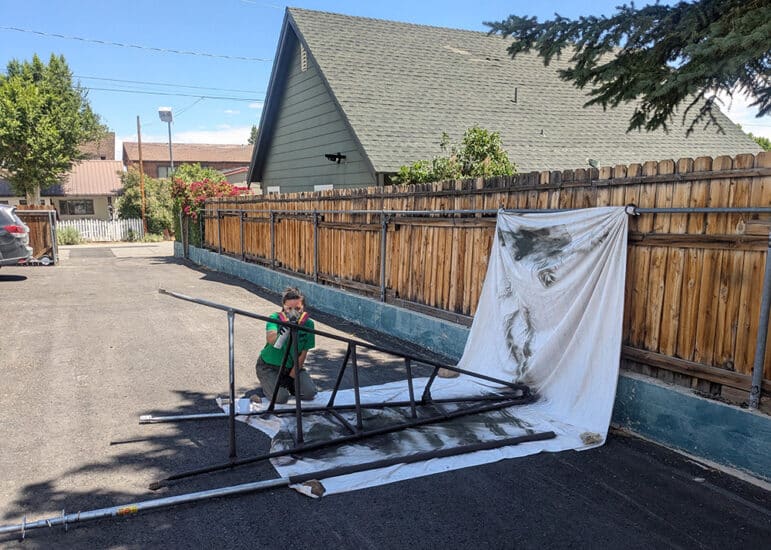
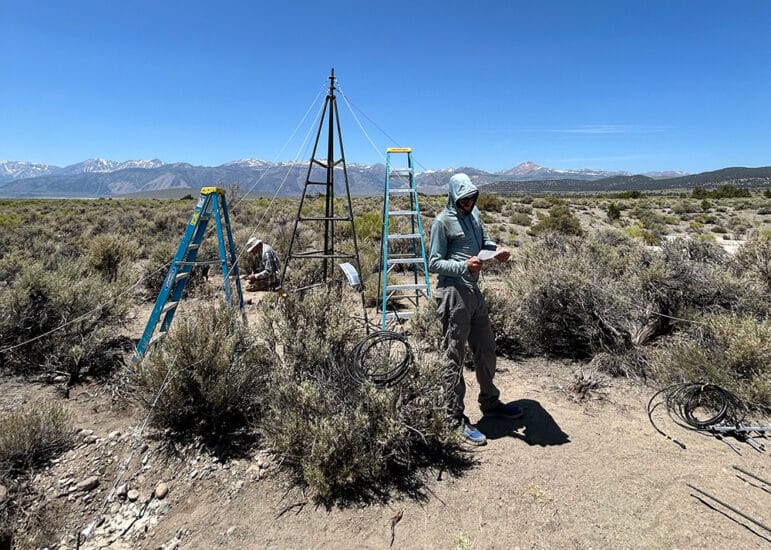

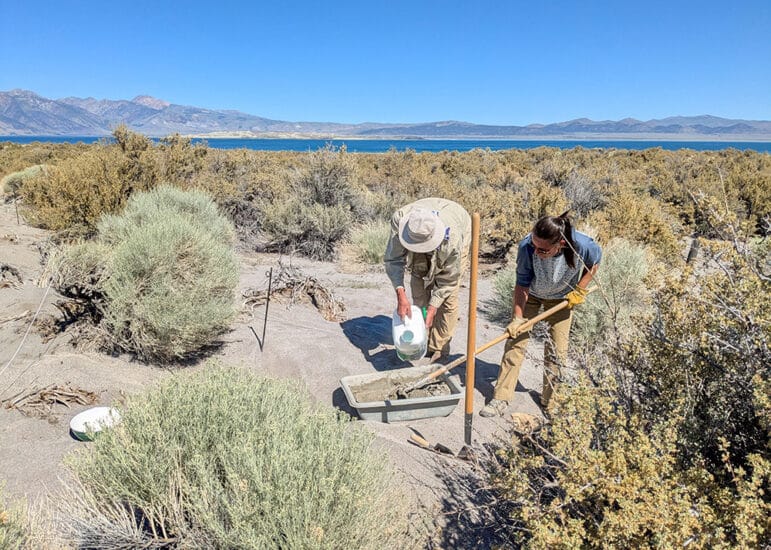
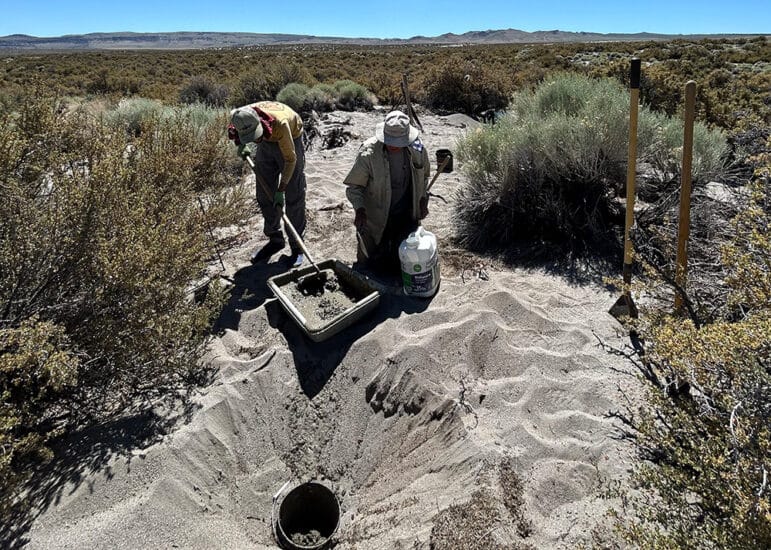
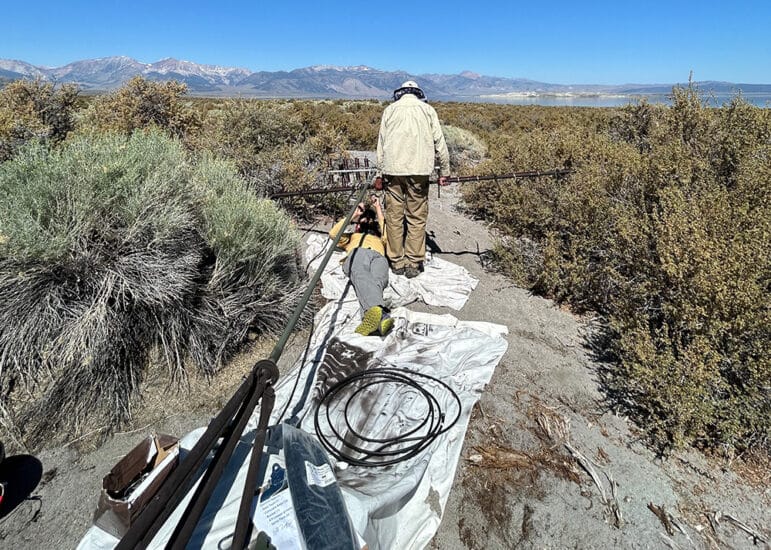
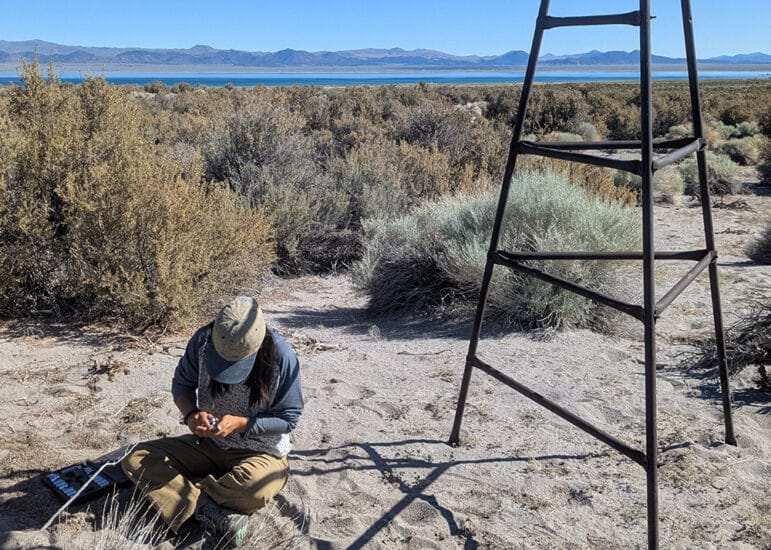


Mindful of our impact on the surrounding habitat and consistent with our US Forest Service permit, we took deliberate visual mitigation steps. Each array was spray painted with non-reflective camouflage to blend with the environment and reduce visual disruption. We also installed anti-perching spikes on the antennas to deter raptors from using them as vantage points to hunt Greater Sage-grouse. Surrounding vegetation was left undisturbed and no machinery was necessary on site. These efforts were aimed at minimizing disturbance to sensitive habitat and maximizing the arrays’ effectiveness.
The last array in the series went up on July 24 after a final round of adjustments, tightening cables, and double-checking antenna angles. We stepped back from our work, dusty, slightly sunburned, and deeply satisfied. The last of our Motus arrays was officially standing!
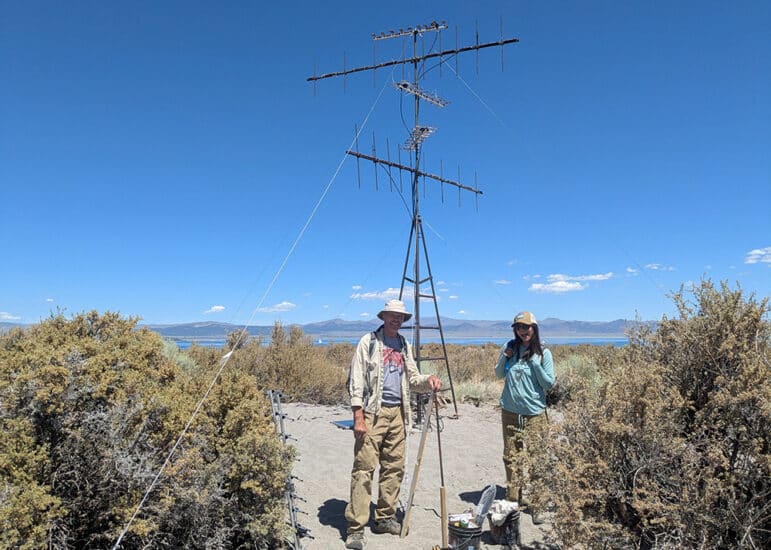
There’s a unique kind of excitement that comes with seeing science in motion. We knew it might take days, even weeks, for the system to detect its first bird. So, when less than 24 hours later, a Red-necked Phalarope tagged by biologist Ryan Carle registered on all three of our freshly deployed arrays, we were thrilled. That one signal confirmed everything: the placement was correct, Ryan’s tags were working, and the system was functioning. After weeks of planning, field work, and fine-tuning, it’s the flight path of a single bird that suddenly brings the entire project to life.
The Motus system is once again online at Mono Lake, tracking birds in real time, and ready to contribute to a growing understanding of how migratory species use this unique and vulnerable ecosystem.
Top photo by Olivia Nelson.

What a great project. Well worth the ice cream at the end!
Fantastic work everyone! This is incredibly exciting news for bird science and conservation in the basin. Thanks for all of your dedication, hard work, and thoughtfulness in making this happen.